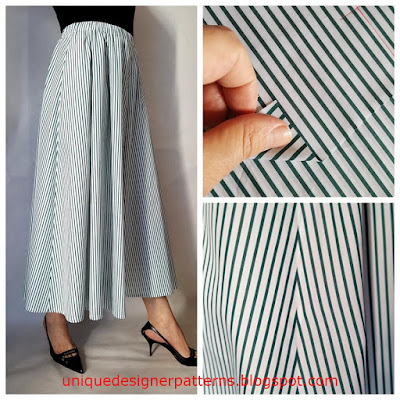"I design from the heart. One cannot predict fashion. It is youth, with its carefree attitude, that sets the mark". Manuel Pertegaz told the New York Times in 1964.
"Today is the centenary of the birth of Pertegaz - with
Balenciaga and
Rodríguez, one of the triumvirate of great Spanish couturiers. Born in Olba, Aragon,
Manuel Pertegaz Ibáñez (1918-2014), moved to Barcelona with his family as a child. After apprenticing with the city´s tailors, he presented his first couture collection at the 1er
Salón de la Moda Española in spring, 1941, opening his own atelier the following year. His classic yet modern touch soon made him one of Franco Spain´s foremost designers, with a staff of hundreds producing his couture and ready-to-wear in Barcelona and Madrid. In the late 1960s, it was Pertegaz who succeeded Rodríguez as the designer of
Iberia´s flight uniforms, and he dressed the singer
Salomé for her performance at the
XIV Eurovision Song Contest held in 1969 in Madrid. The dress weighed 14 kg. and it was made of small chalk blue porcelain cylinders., she wore three 1-kg. necklaces lent to her by Franco´s wife. He also dressed
Pat Cleveland for the opening ceremony of the
1992 Barcelona Olympics. But he already in his eighties when he took on his highest-profile commision: the wedding dress for Spain´s first commoner queen, Letizia Ortiz Rocasolano, who married Crown Prince Felipe in 2004. A century after his birth, Pertegaz is still a byword for elegance".
Sarah Sheehan (writing / research / fashion).
Related post on
PATTERN VAULT blog.
Manuel Pertegaz Ibáñez, well known worldwide as Manuel Pertegaz or simply as PERTEGAZ, was a Spanish fashion designer, born O.T.D. in 1918 in
OLBA (
Teruel - Spain). Spain and his hometown are celebrating the centenary of his brith with some commemorative events that recall the talent of the great Spanish designer and couturier. The
allegorical poster shows the design of the iconic green taffeta coat worn by Suzy Parker in 1954 (below).
SUZY PARKER wearing a bow-tied green taffeta evening coat by Manuel Pertegaz at the
VILLA ROSA restaurant in
PLAZA DE SANTA ANA - Madrid. British Vogue, March 15th, 1954. Photo
HENRY CLARKE via
CONDE NAST STORE. The coat appeared in several publications of the time, and interestingly it is included in the famous
Great Fashion Designs of the Fifties Paper Dolls of Tom Tierney, published in 1985.
Another shot of
Suzy Parker, this time with a stunning puffed taffeta dress.
Madrid 1954., photo by Henry Clarke.
PERTEGAZ made his first trip to the US in 1953, presenting his collection in New York, Boston, Atlanta and Philadelphia. In the sixties he started his adventure with
VOGUE PATTERNS. In his designs for VOGUE you can appreciate the unmistakable modern and refined style of the designer, and the unbeatable craftsmanship typical of mid-century Spanish couture houses.
Published in
Vogue International Pattern Book October/November 1968, VOGUE 2209 is a wrap-dress, A-line step-in with front zipper and button or snap closing has fitted front bodice and loose back. Bias banding extends to standing neckline. Seven-eighths length, or short sleeves. Pockets with welts forming belt carriers. Purchased or self belts. Version B with optional purchased pin.
Featured in
Vogue Pattern Book December 1969/January 1970, VOGUE 2239 is a loose-fitting top with V-neckline has set-in banding and left side front buttoned closing. Full length bias sleeves with band cuffs have button and buttonhole trim. Slightly A-line wrap skirt with waistband and side front button closing has no side seams. Top-stitch trim. Purchased belt and scarf.
Yellow linen Summer coat (detail). Bound buttonholes and matching dyed buttons. Photo by
EUGENIO RECUENCO via
Cadena Ser.
Featured in
Vogue Pattern Book April/May 1969. VOGUE 2121 is a two-piece dress. Loose-fitting top with jewel neckline and slightly cut-away armholes, has left shoulder and side button closing. Purchased belt. A-line skirt with waistband.
Published in
Vogue Pattern Book June/July 1969. VOGUE 2139 is a one-piece dress. Loose-fitting straight sleeveless dress with jewel-neckline has shoulder and side button openings. Purchased trims.
One of the constants with PERTEGAZ creations was the use of jewel buttons adorning dresses and ensembles of very simple lines. These garments were often made from fabrics like "
Natté". VOGUE 2139 is a clear example of these charasteristics. Dress detail.- Photo by
EUGENIO RECUENCO via
VOGUE ESPAÑA.
Featured in
Vogue Pattern Book April/May 1972. VOGUE 2691 is a high-fitted A-line dress, mid-knee or evening length has bias standing collar and front and back seaming details. Sleeveless or full length sleeves.
White wool crepe dress with "stairs" cut seaming detail. Photo by
Pablo Orcajo.
VOGUE 2284 one-piece dress is a representative example of the mid-to-late sixties trends. The Space Age fashion philosophy became a pool of design inspiration. Featured in
Vogue Pattern Book February/March 1970. From the pattern evelope: Losse-fitting bias A-line dress with rolled neck band has front and back seaming details and top-stitch trim. Side zipper closing.
The shirt and skirt combo was present in the early seventies fashion scene. Minimalist details and a "stewardess" style for VOGUE 2567. Featured in
Vogue International Pattern Book August/September 1971. Fitted pantshirt has bias front and back, contrast collar, contrast front-buttoned, snap crotch closing and short or full length sleeves with contrast bands. A-line skirt, two inches below knee, has contrast front, back and waistband.
REFERENCES.-
London College of Fashion - The Woolmark Company.
PERTEGAZ official.
VOGUE COUTURIER DESIGN PATTERNS.
Filmography.
PERTEGAZ fashion for cocktail and evening wear.
PERTEGAZ, un visionario del diseño.
All patterns from my collection.




































